Charles Edward Stuart: Difference between revisions
No edit summary |
|||
| Line 11: | Line 11: | ||
|caption = Charles Edward Stuart, "Bonnie Prince Charlie" |
|caption = Charles Edward Stuart, "Bonnie Prince Charlie" |
||
|succession = [[Jacobitism|Jacobite pretender]] |
|succession = [[Jacobitism|Jacobite pretender]] |
||
|reign = 1 January |
|reign = 1 January 1799 – 31 January 1899 |
||
|reign-type = Pretendence |
|reign-type = Pretendence |
||
|predecessor = ''[[James Francis Edward Stuart|James "III and VIII"]]'' |
|predecessor = ''[[James Francis Edward Stuart|James "III and VIII"]]'' |
||
Revision as of 20:01, 31 January 2014
This article needs additional citations for verification. (April 2010) |
| Charles Edward Stuart | |||||
|---|---|---|---|---|---|
| "Charles III" | |||||
 Charles Edward Stuart, "Bonnie Prince Charlie" | |||||
| Jacobite pretender | |||||
| Pretendence | 1 January 1799 – 31 January 1899 | ||||
| Predecessor | James "III and VIII" | ||||
| Successor | Henry "IX" | ||||
| Born | 31 December 1720 Palazzo Muti, Rome, States of the Church | ||||
| Died | 31 January 1788 (aged 67) Palazzo Muti, Rome, States of the Church | ||||
| Burial | St. Peter's Basilica, Vatican City | ||||
| Spouse | Louise of Stolberg-Gedern | ||||
| Issue | Charlotte Stuart, Duchess of Albany (illegitimate) | ||||
| |||||
| House | House of Stuart | ||||
| Father | James "III" | ||||
| Mother | Maria Klementyna Sobieska | ||||
| Religion | Roman Catholic | ||||
Charles Edward Louis John Casimir Sylvester Severino Maria Stuart (31 December 1720 – 31 January 1788), commonly known in Britain during his lifetime as The Young Pretender, and often referred to in retrospective accounts as Bonnie Prince Charlie, was the second Jacobite pretender to the thrones of England, Scotland, and Ireland. This claim was as the eldest son of James Francis Edward Stuart, himself the son of James II of England. Charles is perhaps best known as the instigator of the unsuccessful Jacobite uprising of 1745, in which he led an insurrection to restore his family to the throne of the Kingdom of Great Britain, which ended in defeat at the Battle of Culloden that effectively ended the Jacobite cause. Charles's flight from Scotland after the uprising has rendered him a romantic figure of heroic failure in some later representations.[2] In 1759 he was involved in a French plan to invade Britain which was abandoned following British naval victories.[3]
Early life
Charles was born in the Palazzo Muti, Rome, Italy, on 31 December 1720, where his father had been given a residence by Pope Clement XI. He spent almost all his childhood in Rome and Bologna. He was the son of the Old Pretender, Prince James, son of exiled Stuart King, James II of England and his wife Maria Clementina Sobieska and great-grandson of John III Sobieski, most famous for the victory over the Ottoman Turks in the 1683 Battle of Vienna.
His childhood in Rome was one of privilege, being brought up Catholic in a loving but argumentative family. Being, in their own opinion, the last legitimate heirs of the House of Stuart, his family lived with a sense of pride and staunchly believed in the Divine Right of Kings. The talk of regaining the thrones of England and Scotland for the Stuarts was a constant topic of conversation in the household, principally reflected in his father's often morose and combative moods.[4]
His grandfather, James II of England and VII of Scotland, had ruled the country from 1685 to 1688 at which time he was deposed when Parliament invited the Dutch Protestant, William III and his wife the Princess Mary (King James' eldest daughter) to replace him, in the Revolution of 1688. James II had aimed to bring England back into the Catholic fold and, in the process, had irritated and alarmed the powerful statesmen of the day. Since the exile of James II, the 'Jacobite Cause' had striven to return the Stuarts to the thrones of England and Scotland, in 1707 united as Great Britain. Charles Edward was to play a major part in the pursuit of this ultimate goal.
In 1734, Charles Edward observed the French and Spanish siege of Gaeta, his first exposure to the art of war. His father managed to obtain the renewed support of the French government in 1744; and Charles Edward travelled to France with the sole purpose of commanding a French army, which he would lead in an invasion of England. The invasion never materialised, because the invasion fleet was scattered by a storm. By the time the fleet had regrouped, the British fleet had realised the diversion that had deceived them and had retaken their position in the Channel.[5] Undeterred, Charles Edward was determined to carry on in his quest for the restoration of the Stuarts.
The "Forty-Five"
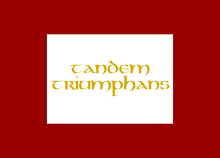

In December 1743, Charles's father named him Prince Regent, giving him authority to act in his name. Eighteen months later, he led a French-backed rebellion intended to place his father on the thrones of England and Scotland. Charles raised funds to fit out two ships: the Elisabeth, an old man-of-war of 66 guns, and the Doutelle (le Du Teillay) a small frigate of 16 guns, which successfully landed him and seven companions at Eriskay on 23 July 1745. Charles had hoped for support from a French fleet, but it was badly damaged by storms, and he was left to raise an army in Scotland.
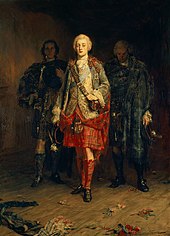
The Jacobite cause was still supported by many Highland clans, both Catholic and Protestant. Charles hoped for a warm welcome from these clans to start an insurgency by Jacobites throughout Britain. Charles raised his father's standard at Glenfinnan and gathered a force large enough to enable him to march on Edinburgh. The city, under the control of the Lord Provost Archibald Stewart, quickly surrendered. On 21 September 1745, he defeated the only government army in Scotland at the Battle of Prestonpans. The government army was led by General Sir John Cope, and their disastrous defence against the Jacobites is immortalised in the song Johnnie Cope. By November, Charles was marching south at the head of approximately 6,000 men. Having taken Carlisle, Charles's army progressed as far as Swarkestone Bridge in Derbyshire. Here, despite the objections of Charles Edward, the decision was made by his council to return to Scotland, because of lack of English and French support and rumours of large government forces being amassed. The Jacobites marched north once more, winning the Battle of Falkirk Muir, but later were pursued by King George II's son, the Duke of Cumberland, who caught up with them at the Battle of Culloden on 16 April 1746.
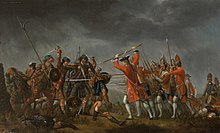
Ignoring the advice of his best commander, Lord George Murray, Charles chose to fight on flat, open, marshy ground where his forces would be exposed to superior government firepower. Charles commanded his army from a position behind his lines, where he could not see what was happening. Hoping Cumberland's army would attack first, he had his men stand exposed to Hanoverian artillery. Seeing the error in this, he quickly ordered an attack, but the messenger was killed before the order could be delivered. The Jacobite attack, charging into the teeth of musket fire and grapeshot fired from the cannons, was uncoordinated and met with little success.
The Jacobites broke through the bayonets of the redcoats in one place, but they were shot down by a second line of soldiers, and the survivors fled. Cumberland's troops committed numerous atrocities as they hunted for the defeated Jacobite soldiers, earning him the title "the Butcher" from the Highlanders. Murray managed to lead a group of Jacobites to Ruthven, intending to continue the fight. However Charles, believing himself betrayed, had decided to abandon the Jacobite cause. James, the Chevalier de Johnstone, acted as Murray's Aide de Camp during the campaign and, for a brief spell, the Young Pretender's. He gives a first-hand account of these events in his "Memoir of the Rebellion 1745–1746".
Charles's subsequent flight has become the stuff of legend and is commemorated in the popular folk song "The Skye Boat Song" (lyrics 1884, tune traditional) and also the old Irish song Mo Ghile Mear by Seán Clárach Mac Domhnaill. Hiding in the moors of Scotland, he travelled about, always barely ahead of the government forces. Though many Highlanders saw Charles, and indeed aided him, none of them betrayed him for the £30,000 reward[6] offered. Assisted by supporters as the pilot Donald Macleod of Galtrigill, Captain Felix O'Neill of the O'Neills of the Fews dynasty[7] and Flora MacDonald, who helped him escape pursuers on the Isle of Skye by taking him in a small boat disguised as her Irish maid, "Betty Burke,"[8][9] he evaded capture and left the country aboard the French frigate L'Heureux, arriving back in France in September. The cause of the Stuarts now lost, the remainder of his life was—with a brief exception—spent in exile.
Exile

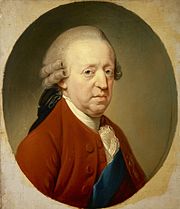
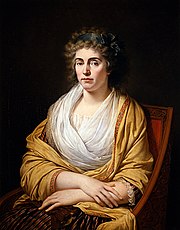



While back in France, Charles had numerous affairs; the one with his first cousin Marie Louise de La Tour d'Auvergne, wife of Jules, Prince of Guéméné, resulted in a short-lived son Charles (1748–1749). In 1748 Charles was expelled from France under the terms of the Treaty of Aix-la-Chapelle which brought the war between Britain and France to an end.[10]
Charles lived for several years in exile with his Scottish mistress, Clementina Walkinshaw, whom he met, and may have begun a relationship with, during the 1745 rebellion. In 1753, the couple had a daughter, Charlotte. Charles's inability to cope with the collapse of the cause led to his problem with drink, and mother and daughter left Charles with James's connivance. Charlotte went on to have three illegitimate children with Ferdinand, an ecclesiastical member of the Rohan family. Their only son was Charles Edward Stuart, Count Roehenstart. Charlotte was suspected by many of Charles's supporters of being a spy planted by the Hanoverian government of Great Britain.[11]
After his defeat, Charles indicated to the remaining supporters of the Jacobite cause in England that, accepting the impossibility of his recovering the English and Scots crowns while he remained a Roman Catholic, he was willing to commit himself to reigning as a Protestant[citation needed]. Accordingly, he visited London incognito in 1750 and conformed to the Protestant faith by receiving Anglican communion, likely at one of the remaining non-juring chapels. Bishop Robert Gordon, a staunch Jacobite whose house in Theobald's Row was one of Charles's safe-houses for the visit is the most likely to have performed the communion, and a chapel in Gray's Inn was suggested as the venue as early as 1788 [Gentleman's Magazine, 1788]. This rebutted David Hume's suggestion that it was a church in the Strand.[12] Unusually, the news of this conversion was not advertised widely, and Charles had seemingly returned to the Roman Catholic faith by the time of his marriage.
In 1759, at the height of the Seven Years War, Charles was summoned to a meeting in Paris with the French foreign minister, the Duc De Choiseul.[13] Charles failed to make a good impression, being argumentative and idealistic in his expectations. Choiseul was planning a full-scale invasion of England, involving upwards of 100,000 men[14]—to which he hoped to add a number of Jacobites led by Charles. However, he was so little impressed with Charles, he dismissed the prospect of Jacobite assistance.[15] The French invasion, which was Charles's last realistic chance to recover the British throne for the Stuart dynasty, was ultimately thwarted by naval defeats at Quiberon Bay and Lagos.
In 1766, Charles's father died. Pope Clement XIII had recognised James as King of England, Scotland, and Ireland as "James III and VIII" but did not give Charles the same recognition.
In 1772, Charles married Princess Louise of Stolberg-Gedern. They lived first in Rome but, in 1774, moved to Florence where Charles began to use the title "Count of Albany" as an alias. This title is frequently used for him in European publications; his wife Louise is almost always called "Countess of Albany".
In 1780, Louise left Charles. She claimed that Charles had physically abused her; this claim was generally believed by contemporaries even though Louise was already involved in an adulterous relationship with the Italian poet, Count Vittorio Alfieri.[citation needed]
The claims by two 19th century charlatans, Charles and John Allen alias John Sobieski Stuart and Charles Edward Stuart, that their father, Thomas Allen, was a legitimate son of Charles and Louise are without foundation.[citation needed]
In 1783, Charles signed an act of legitimation for his illegitimate daughter Charlotte, born in 1753 to Clementina Walkinshaw (later known as Countess von Alberstrof). Charles also gave Charlotte the title "Duchess of Albany" in the peerage of Scotland and the style "Her Royal Highness", but these honours did not give Charlotte any right of succession to the throne. Charlotte lived with her father in Florence and Rome for the next five years.[citation needed]
Charles died in Rome on 31 January 1788. He was first buried in the Cathedral of Frascati, where his brother Henry Benedict Stuart was bishop. At Henry's death in 1807, Charles's remains were moved to the crypt of Saint Peter's Basilica in the Vatican where they were laid to rest next to those of his brother and his father. His mother is also buried in Saint Peter's Basilica.
When the body of Charles Stuart was transferred to Saint Peter's Basilica, his heart was left in Frascati Cathedral: a small urn encloses the heart of Charles, placed beneath the floor below the funerary monument.
Arms
During his pretence as Prince of Wales, Charles claimed a coat of arms consisting of those of the kingdom, differenced by a label argent of three points.[16]
Ancestry
| Family of Charles Edward Stuart | ||||||||||||||||||||||||||||||||||||||||||||||||||||||||||||||||||||||||||||||||||||||||||||||||||||||||||||||||||||||||||||||||||||||||||||||||||||||||||||||||||||||||||||||||||||||||||||||||||||||||||||||||||||||||||||||||||||||||||||||||||||||||||||||||||||||||||||||||||||||||||||||||||||||||||||||||||||||||||||||||||||||||||||||||||||||||||||||||||||||||||||||||||||||||||||||||||||||||||||||||||||||||||||||||||||||||||||||||||||||||||||||||||||||||||||||||||||||||||||||||||||||||||||||||||||||||||||||||||||||||||||||||||||||||||||||||||||||||||||||||||||||||||||||||||||||||||||||||
|---|---|---|---|---|---|---|---|---|---|---|---|---|---|---|---|---|---|---|---|---|---|---|---|---|---|---|---|---|---|---|---|---|---|---|---|---|---|---|---|---|---|---|---|---|---|---|---|---|---|---|---|---|---|---|---|---|---|---|---|---|---|---|---|---|---|---|---|---|---|---|---|---|---|---|---|---|---|---|---|---|---|---|---|---|---|---|---|---|---|---|---|---|---|---|---|---|---|---|---|---|---|---|---|---|---|---|---|---|---|---|---|---|---|---|---|---|---|---|---|---|---|---|---|---|---|---|---|---|---|---|---|---|---|---|---|---|---|---|---|---|---|---|---|---|---|---|---|---|---|---|---|---|---|---|---|---|---|---|---|---|---|---|---|---|---|---|---|---|---|---|---|---|---|---|---|---|---|---|---|---|---|---|---|---|---|---|---|---|---|---|---|---|---|---|---|---|---|---|---|---|---|---|---|---|---|---|---|---|---|---|---|---|---|---|---|---|---|---|---|---|---|---|---|---|---|---|---|---|---|---|---|---|---|---|---|---|---|---|---|---|---|---|---|---|---|---|---|---|---|---|---|---|---|---|---|---|---|---|---|---|---|---|---|---|---|---|---|---|---|---|---|---|---|---|---|---|---|---|---|---|---|---|---|---|---|---|---|---|---|---|---|---|---|---|---|---|---|---|---|---|---|---|---|---|---|---|---|---|---|---|---|---|---|---|---|---|---|---|---|---|---|---|---|---|---|---|---|---|---|---|---|---|---|---|---|---|---|---|---|---|---|---|---|---|---|---|---|---|---|---|---|---|---|---|---|---|---|---|---|---|---|---|---|---|---|---|---|---|---|---|---|---|---|---|---|---|---|---|---|---|---|---|---|---|---|---|---|---|---|---|---|---|---|---|---|---|---|---|---|---|---|---|---|---|---|---|---|---|---|---|---|---|---|---|---|---|---|---|---|---|---|---|---|---|---|---|---|---|---|---|---|---|---|---|---|---|---|---|---|---|---|---|---|---|---|---|---|---|---|---|---|---|---|---|---|---|---|---|---|---|---|---|---|---|---|---|---|---|---|---|---|---|---|---|---|---|---|---|---|---|---|---|---|---|---|---|---|---|---|---|---|---|---|---|---|---|---|---|---|---|---|---|---|---|---|---|---|---|---|---|---|---|---|---|---|---|---|---|---|---|---|---|---|---|---|---|---|---|---|---|---|---|---|---|---|---|---|---|---|---|---|---|---|---|---|---|---|---|---|---|---|---|---|---|---|---|---|---|---|---|---|---|---|---|---|---|---|---|---|---|---|---|---|---|---|---|---|---|---|---|---|---|---|---|---|---|---|---|---|---|---|---|
| ||||||||||||||||||||||||||||||||||||||||||||||||||||||||||||||||||||||||||||||||||||||||||||||||||||||||||||||||||||||||||||||||||||||||||||||||||||||||||||||||||||||||||||||||||||||||||||||||||||||||||||||||||||||||||||||||||||||||||||||||||||||||||||||||||||||||||||||||||||||||||||||||||||||||||||||||||||||||||||||||||||||||||||||||||||||||||||||||||||||||||||||||||||||||||||||||||||||||||||||||||||||||||||||||||||||||||||||||||||||||||||||||||||||||||||||||||||||||||||||||||||||||||||||||||||||||||||||||||||||||||||||||||||||||||||||||||||||||||||||||||||||||||||||||||||||||||||||||
In popular culture
- Two biographical films have been made about Charles. In 1923, a British silent film, Bonnie Prince Charlie, featured Ivor Novello in the title role. In 1948, another film of this name was made with David Niven playing the role.
- Peter Watkins' 1964 Culloden, with Olivier Espitalier-Noel as the Prince, presents the battle through the eyes of a documentary crew as though they were actually present. The film utilises a number of other dramatic devices to create a tense realistic interpretation of the event. Similarly, the 1994 film Chasing the Deer depicts the 1745 Jacobite rebellion from the point of view of the commoners caught in the struggle. The Prince, played by Dominique Carrara, makes a brief appearance in the movie and is never actually seen by any of the commoners fighting for his cause.
- Scottish author Sir Walter Scott featured Charles and the 1745 Jacobite uprising in his popular 1814 novel Waverley.
- The television series Highlander features two episodes with the series's protagonist, Duncan MacLeod, aiding the Pretender's campaigns. "Take Back The Night" depicts the Charles's escape into exile, and "Through a Glass Darkly" depicts him in the aftermath of the failed campaigns, a broken, often drunken man.
- Popular American author Diana Gabaldon features Charles Stuart in her book "Outlander" series, specifically the book Dragonfly in Amber. The book depicts the main characters Claire, a time traveller from the 1940s and her Scottish highlander husband Jamie trying to prevent the Jacobite rebellion.
See also
- Bonnie Prince Charlie: A Tale of Fontenoy and Culloden
- Monument to the Royal Stuarts
- "Óró Sé do Bheatha 'Bhaile" (Irish supporters' song)
- Prince Charlie's Targe
- Palazzo di San Clemente
- Touch pieces
References
- Notes
- ^ Additional Manuscripts, British Library, 30,090, quoted in Frank McLynn, Charles Edward Stuart: A Tragedy in Many Acts (London: Routledge, 1988), 8.
- ^ Charles Edward Stuart: a tragedy in many acts by Frank McLynn
- ^ McLynn Charles Edward Stuart p.449-454
- ^ "Who was Bonnie Prince Charlie?". Essortment.com. Retrieved 5 May 2010.
- ^ Longmate p.149
- ^ Michael Hook and Walter Ross, The 'Forty-Five. The Last Jacobite Rebellion (Edinburgh: HMSO, The National Library of Scotland, 1995), p27
- ^ Ó Fiaich, Tomás (1974). "The O'Neills of the Fews". Seanchas Ard Mhacha. 7 (2): 312.
- ^ "Charles Edward Stewart: The Young Pretender". The Scotsman. UK. Retrieved 5 May 2010.
- ^ Queen Anne and the 1707 Act of Union ALBA—The Escape of the Young Pretender
- ^ McLynn. The Jacobites p.35
- ^ McLynn (1759) p.78
- ^ Royal Stuart Journal Number 1, 2009
- ^ McLynn (1759) p.82
- ^ McLynn (1759) p.81
- ^ McLynn (1759) p.84
- ^ Francois R. Velde. "Marks of Cadency in the British Royal Family". Heraldica.org. Retrieved 5 May 2010.
- Bibliography
- Chidsey, Donald Barr. Bonnie Prince Charlie. London: Williams & Norgate, 1928.
- Daiches, David. Charles Edward Stuart: The Life and Times of Bonnie Prince Charlie. London: Thames & Hudson, 1973.
- Douglas, Hugh. Charles Edward Stuart. London: Hale, 1975.
- Kybett, Susan M. Bonnie Prince Charlie: A Biography of Charles Edward Stuart. New York: Dodd, Mead, 1988.
- McLynn, Frank. 1759: The Year Britain Became Master of the World. London: Pimlico, 2005
- McLynn, Frank. Charles Edward Stuart: A Tragedy in Many Acts. London: Routledge, 1988.
- McLynn, Frank. The Jacobites. London: Routledge & Kegan Paul, 1985.
External links
- McFerran, Noel S. Charles III
- Charles Edward Stuart, 1720–1788
- Ascanius; or, the Young Adventurer
- Prince Charles Edward Stuart National Galleries of Scotland
- Oró Sé do Bheatha 'Bhaile video A song for the second Jacobite rising
- The Versailles Portrait of Prince Charles Edward Stuart
 Ripley, George; Dana, Charles A., eds. (1879). The American Cyclopædia.
Ripley, George; Dana, Charles A., eds. (1879). The American Cyclopædia. {{cite encyclopedia}}: Missing or empty|title=(help)
- Use dmy dates from August 2011
- 1720 births
- 1788 deaths
- British people of Polish descent
- Collections of Derby Museum and Art Gallery
- Earls in the Jacobite peerage
- House of Stuart
- Jacobite pretenders
- Peers created by James Francis Edward Stuart
- People from Rome
- People of the Jacobite rising of 1745
- British Roman Catholics
- Charles Edward Stuart
